4.7'' and 5.5'' iPhone 6 rumor round-up: design, specs, price, and release date

You needn't consider yourself an iFan to be wholly intrigued by what Apple has in store for consumers around the globe year after year, especially if you're eyeing the flagship smartphone tier. The Cupertino-based company has been churning out iPhones like nobody's business, and there's no reason to believe that the upcoming iPhone refresh (and a rumored iPhone phablet) will be any less of a success. That, not at all coincidentally, is why we set out to curate and summarize the vast troves of intel we've obtained up to this point.
So do we have enough to label this library of leaks substantial? Sure, but there are obviously no guarantees until we see at least one of the two actual iPhones come September. That said, it would appear that we have one major part of the puzzle figured out, and that's where we'll start!
Design
4.7'' iPhone 6
As became obvious with the iPhone 5c, you can trust that somebody, somewhere in Apple's supply chain, will take it upon himself to provide an early glimpse into the new iPhone. That certainly is the case with the upcoming iPhones, one of which has been suggested (to put it mildly) to come sporting a much larger, 4.7-inch screen, when compared with the current iPhone crop. What's more, we've had quite a few leaks that seem to do dovetail on one particular aspect of the iPhone 6: design.
At this point in time, it appears that different splinters of information agree on the exterior of the 4.7'' iPhone 6, which reminds a whole lot of the iPod Touch, the iPhone 5c, and even the new design language of the iPad Air and new iPad mini. In other words, the many dummies and schematics we've seen pop online so far, paint a more rounded design, and a noticeably slimmer body, which is rumored to measure in at anything from 5.58mm (0.22'') up to 6.1mm (0.24''). Regardless of which of these two extremes we take for granted, we're still talking about a significant slimming down when compared with the iPhone 5s (7.6mm, or 0.3''). As for the overall dimensions, one of several schematics that have been leaked suggests a 138 x 67 mm (5.4 x 2.6 in) config, and the rest don't really deviate significantly from those numbers. That's quite the (expected) growth compared with the iPhone 5s' dimensions of 123.8 x 58.6 (4.87 x 2.31 in).
And yet, despite these changes, what we've seen of the supposed 4.7'' iPhone 6 still is an iPhone at heart, and it actually completes Apple's design circle across all its iDevices. We still have the two distinct horizontal lines at the top and bottom when looking at the rear. and up front -- we've seen no significant changes. The latest leaks suggest that the Touch ID fingerprint scanner will go through a small design and performance upgrade, and come with a more pronounced chrome encasing this time around. In fact, one particular dummy that came to our attention had a surprisingly well-matching yellow edge surrounding the sensor. Another rather major difference is the new placement of the power button, which seems to have found itself a new home at the right side of the 4.7'' iPhone 6 -- a change that makes a whole lot of sense, seeing as reaching for the top of a larger device can be quite the nuisance. Lastly, and this is one of the least-likely rumors we've come across so far, it has been suggested that the new iPhone could be water-resistant. That would be quite a big deal for a number of people, especially now that resistance to the elements has seemingly become such a strong selling point.
So, based on what we think we know so far, here's how the 4.7'' iPhone 6 might look like next to the competition.
5.5'' iPhone 6
For whatever reason, the reportedly upcoming, 5.5'' iPhablet has been the target of far less information when compared with the 4.7'' model. The precise reason for that eludes us, though it could be because its slated for a later launch. In any case, from what we've seen so far in terms of images, dummy 5.5-inch models appear to be pretty much identical to the 4.7'' version -- just bigger. Whether that'll remain the case should an iPhone phablet be released is unknown, though we would venture a guess that even if the two differ, it won't be by much. For example, a bigger body could allow Apple to stick more than a mono speaker into the phablet, but beyond that, we don't expect major differences between the two models.

Rumored specs
With design out of the way, you'll be looking for some juicy details as pertain to the hardware specs of the new iPhones. Unfortunately, we don't have as much in this particular area. Apart from rumors and some good use of common sense, that is.
Display
4.7'' iPhone 6
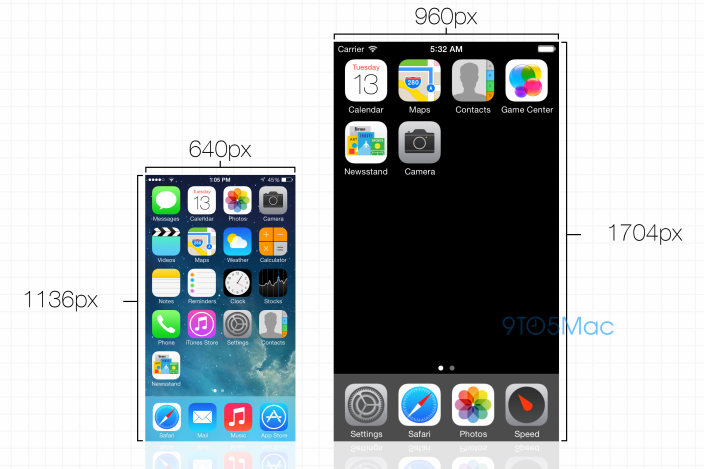
Further still, according to 9to5Mac, the new resolution could very well read 1704 x 960, or 416 ppi (more likely). The only ground for this assumption is Apple's rather pragmatic (and thus, predictable) approach to resolution bumping in the past, where it has always kept these upgrades simple enough for developers to be able to easily scale and migrate existing visual assets to the next level. In that sense, a bump to 1704 x 960 would entail a 3x bump of the base 16:9 resolution of 568 x 320 (which is half the current resolution of iPhone 5/5s). Lastly, the latest suggestion as to the resolution is 828 x 1472, based on certain iOS 8 files from the Xcode 6 SDK beta.
It's also worth pointing out that Apple has been investing heavily into the development of sapphire glass for use in smartphones, and at this point it appears very likely that we'll see the company adopt the extremely tough material for use with its displays. Sapphire glass is already used to protect the iPhone 5s' camera and Touch ID sensor, as it's harder to scratch than Gorilla Glasss (though more brittle). In fact, Apple actually patented a method of fusing a sapphire laminate layer with a device's screen, further corroborating the notion of a break-up with Corning. On a related note, a November 2013 report from Bloomberg claims that Apple is working on new designs for the 4.7'' iPhone's display, and is working on something rather enigmatic, called 2.5-dimension glass. In Bloomberg's own words, "... the material lets manufacturers taper the edges of the screen where the bezel meets the frame of a smartphone." That said, there's no reason to believe that such tech will end up in the 4.7'' iPhone 6, even if Apple is, indeed, working on it.
Lastly, a report out of China claims that the 4.7'' iPhone 6 will have an advanced vibrator motor nestled within its body -- an advantage that is referred to as the new iPhone's "secret weapon". Said vibrator will actually make haptic feedback possible, and will allow for varying intensities of vibration. This means that, for example, light taps through the settings menu will produce light vibrations, while taking damage when fighting that last boss in that cool game might rattle the entire 4.7'' iPhone 6. Such a system would open up even more possibilities for third-party developers, who could work on creating even more immersive experiences.
5.5'' iPhone 6
Once again, the iPhablet proves to be far more mysterious than the 4.7'' iPhone 6, and that means we again have far less to go on.
Obviously, the size of the screen, at 5.5 inches, is lately taken for granted, though it remains to be seen just how resolute that one will be. So far, there have been no suggestions or indications, even though some people seem to think that a Quad HD resolution (1440 x 2560 pixels) might be in the cards. However, if we have to be honest, we find that quite unlikely -- Apple is not at all known for jumping onto the specs bandwagon. Instead, it's far more likely that a "Retina" display will be adopted once again, meaning a pixel density of about 300 pixels per inch. That said, if we agree that the 4.7'' iPhone 6's resolution really is 960 x 1704 (a ppi of over 415), then, perhaps, Apple is about to make a change.
As for the rest -- sapphire glass, advanced haptic feedback systems -- it's probably safe to say that if one gets them, the other will, too.
Camera and Processor
4.7'' iPhone 6

For starters, while we do expect Apple to once again sit out on the megapixel arms race, and perhaps stick to an 8MP snapper, more and more rumors seem to disagree, and instead point towards either a 10MP unit or a 13MP one from Sony (IMX220, believed to be in the upcoming Sony Xperia Z3). Instead of pursuing pixel count, the 4.7'' iPhone 6 is instead said to improve on its photographic capabilities by offering a larger, 1/2.6'' sensor (vs. a 1/3'' one in the iPhone 5s), with larger, 1.75μm pixels, and wider, f/2.0 aperture. Lastly, we're told that despite initial rumors, the 4.7'' iPhone 6 will pass on Optical Image Stabilization, likely to avoid extra production costs and in order to keep thickness in check. Instead, the analyst-in-chief at ESM-China, Sun Chang Xu, claims that Apple will opt for Electronic Image Stabilization.
On a separate, but related note, several technical CAD renderings, supposedly of the 4.7'' iPhone 6, show a device that has its camera protruding from its top left corner. This would be highly atypical of Apple, of course, but considering that the phone is rumored to be even thinner, along with the (small) possibility that Cupertino is looking to adopt Optical Image Stabilization, that may not be a completely unfounded claim.

As far as the system chip that will power the 4.7'' iPhone 6 is concerned, we obviously still don't have anything that is confirmed. That said, the aforementioned Sonny Dickson has suggested that a 2.6GHz A8 chip could be what we'll find inside the 4.7'' iPhone 6. However, considering Apple's current track record, and especially its latest 1.3GHz, 64-bit A7 chip found in the iPhone 5s, we find it hard to believe that Apple will distance itself from its approach in such a drastic way. According to the folks behind 9to5Mac, the new silicon will introduce a relatively smaller performance boost, and will instead focus on bettering efficiency. Makes sense -- the current crop of iPhones sure isn't known for its longevity. In any case, the latest rumors instead point to the (slightly) more believable two 2GHz cores, and we're also told that the Apple will use Qualcomm's latest MDM9x35 cellular modem, which supports Category 6 LTE, or speeds of up to 300 Mbps. Lastly, the Wi-Fi (802.11ac) chip on board is said to be Broadcom's work. What's more, Apple will be apparently also using a new co-processor, code-named "Phosphorus", that will be dedicated to keeping track of motion and health data.
5.5'' iPhone 6
Yet again, information about the 5.5'' iPhone 6 has been harder to come by, and especially in this department. This gives us reason to believe (and that would be typical of Apple) that the iPhablet will sport the exact same hardware in terms of imaging and processing power. That said we've also seen reports claiming that while the 4.7'' model will skip on Optical Image Stabilization (OIS), the iPhablet's camera will feature such a gizmo. This makes a certain amount of sense, as the device's bigger physical footprint will give Apple with enough room to implement this otherwise bulky piece of tech without seriously compromising the thinness of the device.
As for the processor that will end up powering an eventual, larger-screened iPhone 6, we'd put our money on an identical unit.
Battery
While we obviously still have nothing that is confirmed about the new iPhones, word on the street is that the new Apple flagships will up the ante in terms of battery life, but perhaps not by as much as some might expect. Apparently, the 4.7'' iPhone 6 will pack a cell with capacity of anywhere between 1800 and 1900 mAh (1810 mAh being the suggested figure), though a 2100 mAh cell has also been suggested. As for the 5.5'' version, the rumors similarly diverge -- some claim Apple is going for a 2500 mAh unit, while others insist on a larger, 2915 mAh unit.
In related news, we've also been told that the 4.7'' iPhone 6 will be chargeable wirelessly, so it wouldn't be a stretch to imagine that if such a perk is, indeed, on its way, then it'll also be available with the 5.5'' iPhablet.
Right now, we have no clue as to which particular wireless charging standard Apple is thinking of adopting. Perhaps it has a standard of its own altogether?
128GB of storage at last?
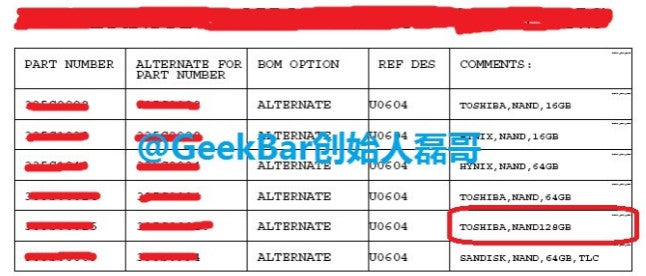
Leaked records, supposedly of the components that are to become part of the new 4.7'' iPhone/5.5'' iPhablet, or both,, suggest that Apple may finally be ready to make the jump towards a new high in built-in storage: 128GB. Indeed, right now the maximum you can get with any one iPhone is 64GB, though that may be insufficient for particularly heavy users, especially since Apple does not buy the microSD expansion rationale. Of course,
NFC and Category 6 LTE
According to an Apple insider with knowledge of the 4.7'' iPhone 6, the new device may finally make the jump to NFC. Apparently, if an NFC chip indeed makes it into the smaller iPhone 6, it'll be mainly used to facilitate wireless payments.
On another note, the very same alleged insider claims that the 4.7'' model of the iPhone 6 will feature an even more potent LTE radio which should allow for (theoretical) Category 6 download speeds of up to 300 Mbps. Not too bad, though it's unlikely you'll see any practical difference -- the 150 Mbps speeds provided by the current iPhone 5s are already beyond what your carrier provides.
Once again, we have every reason to believe that both these features are also coming to the 5.5'' iPhone 6 model.
New HD audio earphones?
With Apple's official, acquisition of super-popular headphone maker Beats Audio, it's only natural that we'd start asking questions. So, for example, we're quite curious of Apple's plans for the company, especially as pertains to its mobile products. In the past, we've seen HTC make good use of the popular brand, so it's obviously possible that Apple will be pushing the envelope in the HD audio department, if only on the software side. That said, there are already rumors that Cupertino is prepping a new model of earphones for its new iPhone, though it remains to be seen if it can assimilate Beats Audio's proprietary tech in time for the iPhone 6's release.
There has also been speculation that Apple just might forgo the use of a 3.5 mm audio jack altogether in favor of using its proprietary Lightning port connector. The idea behind this is obviously to provide higher quality audio, though we sure hope that a pair of Beats Audio earphones will be a part of this move, as the number of compatible earphones on the market in the beginning will likely be critically low.
On another, but very similar note, it has been suggested that Apple will be upgrading its iTunes store to allow for HD audio streaming, and that would also entail changes inside iOS 8 as well. That makes sense, seeing as the stock iOS 7 music player is limited in its capabilities -- for example, 24-bit tracks with sample rate beyond 48MHz cannot be played, and even third-party solutions have a limitation on what they can do. It is rumored that iOS 8 will change that, and that's not all.
iOS 8

As has become customary, it's a sure bet to expect a new, major iOS update to make its debut with the new iPhone(s), and that's exactly where things are headed. Dubbed iOS 8, the new update was made official at the beginning of June, at Apple's annual WWDC developer conference, and the 4.7'' iPhone 6 is scheduled to be the first device to pack the updated software out-of-the-box. The 5.5'' iPhone 6 model will surely also make use of the new operating system, though it's unknown if any exclusive productivity-enhancing features will come as extra with it.
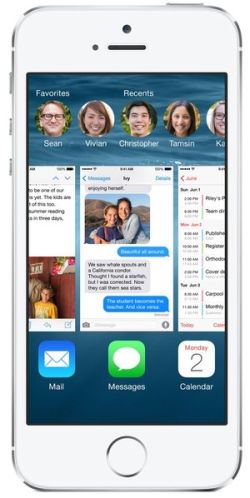
Multitasking improvements
One way in which multitasking has been improved on iOS 8 is the addition of a row of favorite/recent contacts to the multitask menu (double-click the home button). These are actionable, which means that you can place a quick call or send a text message, or even initiate a FaceTime talk right on the spot.
The built-in E-mail client has also seen a notable improvement -- you can now swipe down a message you're already composing and access content that is already in your mailbox, and even add assets such as attachments, from another message. Also handy is a feature that is not yet part of iOS 8, but is expected to become a part of the iPad, at least at some point: split screen. Right now, we're unaware of whether this feature will make an appearance with the 4.7'' iPhone 6, but Apple might decide it's a good enough fit for the 5.5'' model.
Lastly, Apple talked at length about its 'continuity' philosophy during the event, which will be quite a relevant addition to the multitasking capabilities of the new iPhones. Put in simpler words, this new approach means that you'll be able to seamlessly transfer essential functionality across your iDevices. For example, a call that you receive on the iPhone can be patched through to your iPad effortlessly, and this will also work for text messages and emails. Good stuff!
Actionable notifications and widgets
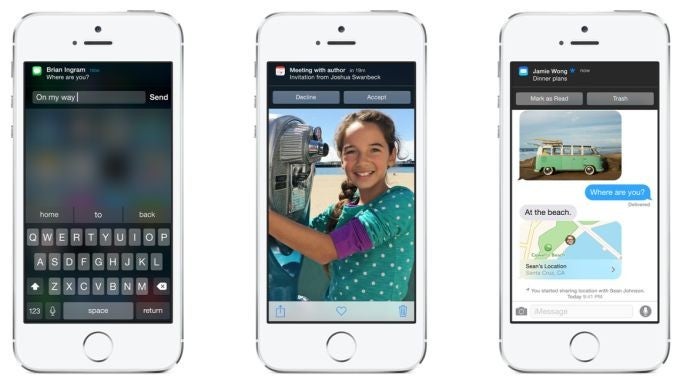
Yep, you read that right. Apple has finally decided that incoming notifications should be actionable, meaning that you can, for example, reply to an e-mail right from your notification bar. You can also archive it or delete it, and the suite of functions available varies depending on the app. Best of all, this functionality will be available for third-party developers to fiddle with.
On an equally-exciting note, Apple is finally adding widgets to iOS 8, but these will only be viewable in the Today tab of the notifciation bar. Some examples of what you'll be to do include live feed of sports games, and the ability to bid on eBay items in real time.
Closed garden no more?
As already pointed out, iOS 8 introduces a few changes that seem to indicate that Apple has had a change of heart in terms of how it does things, software wise. In other words, the closed garden that iOS has been so far will finally open up a little bit.
One example of this is a certain type of functionality that we've come to love and reference with Android -- sharing across your entire app arsenal. A simple example: you will now be able to juggle content from different apps quicker and more efficiently, as those will now have a channel of communication with each other, narrow as it may be.
Apple is also finally giving third-party devs access to the iOS keyboard, which can now be exchanged for another solution off the iTunes store. That's doubly surprising seeing as Apple improved its own keyboard (now dubbed QuickType), and added predictive, next-word suggestions. This is the type of functionality that has been around for a while now, but what sets QuickType apart is its ability to be aware of the context of different conversations. For example, it'll automatically pick short answers to common questions, and, after a while, it'll be able to juggle between your different vocabularies, depending on who you're chatting up. In other words, QuickType will eventually learn to use a more formal vocabulary when conversing with a colleague or a possible lead, and switch to a much more informal one when talking to your best mate.
New Health app will tackle the growing fitness & wellness category
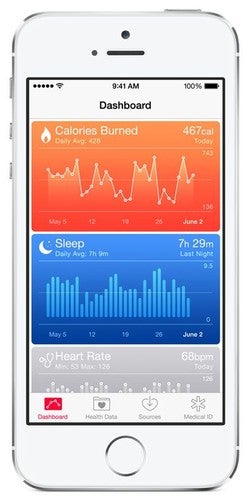
Health was developed (and continues to be) in conjunction with the esteemed Mayo Clinic, and will centralize your various fitness and health stats in one singular place. Of course, in order to make full use of Health, you'll need to get yourself appropriate, third-party accessories, as we still don't know if and when a possible iWatch will make an appearance.
The type of variables you'll be able to track with the help of the Health app include heart rate, blood pressure, the amount of burned calories, and sleep data. Obviously, it's certainly possible that Apple will add more categories in the future.
Siri is now always listening
Siri has also been graced with a few notable updates, the most important of which is the its new-found ability to listen to your input at all times -- just like how Google Now works on a few, select Android handsets.
Equally as welcome is Siri's new ability to recognize songs (developed in partnership with Shazam), and it will even allow you to make iTunes purchases of songs you like just by following your voice.
Lastly, smart-connected home appliances that make use of Apple's new HomeKit API will all be controllable through Siri.
Price and release date
$199 with a 2-year contract -- that's how much carriers have traditionally asked in exchange for a shiny new 16GB iPhone. You can also have an unlocked 16GB unit for $649, and sales usually start one week after Apple introduces the new iPhone in September.

Until proven otherwise, there's no reason to think that Apple is about to change its pricing or release window for the 4.7'' iPhone 6, though it should be noted that one Jefferies analyst has claimed that Apple is pushing carriers to introduce a $100 raise, or $299 with a 2-year commitment. According the analyst, the initial response from carriers was a "No!", but he doubts their ability to resist such a price change.
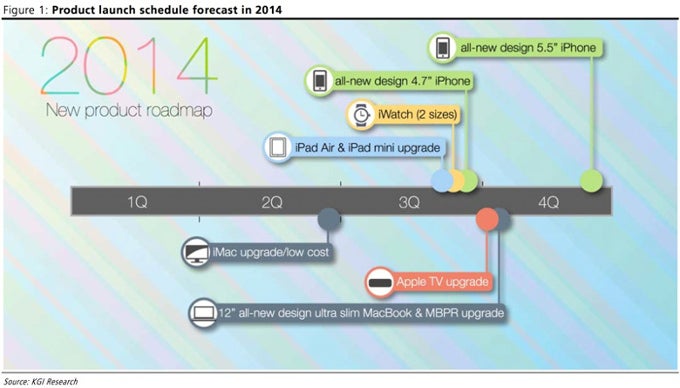
As for the 5.5'' iPhone 6, things are far less clear. For one, that one would constitute a whole new form-factor for Apple, meaning that we can't rely on any previous knowledge we have on how the company goes about pricing, simply because it has never priced an iDevice phablet. Obviously, it sounds plausible that the larger screen would equal a higher price, but Apple could decide to stomach the costs itself (not very likely, that one).
As for a release date, projections are all over the place. Sure, we've heard it being said multiple times that various delays may push the 5.5'' iPhone 6's release date all the way to 2015, but other reports don't necessarily agree. Right now, the latest information suggests a release of both between the 16th and the 19th of September, the week following Apple's event, set for September 9th.
Last update: 08.09.2014
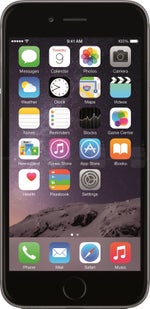
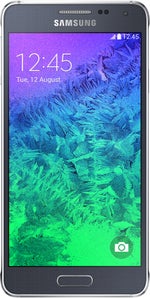
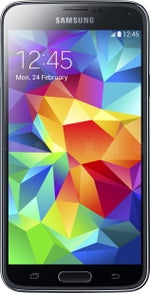
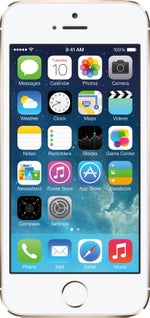




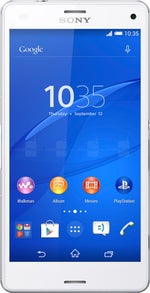
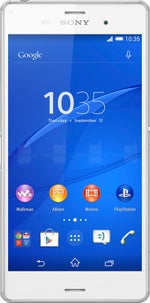
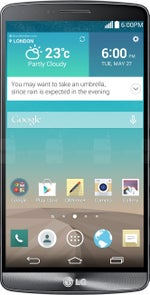













Things that are NOT allowed: